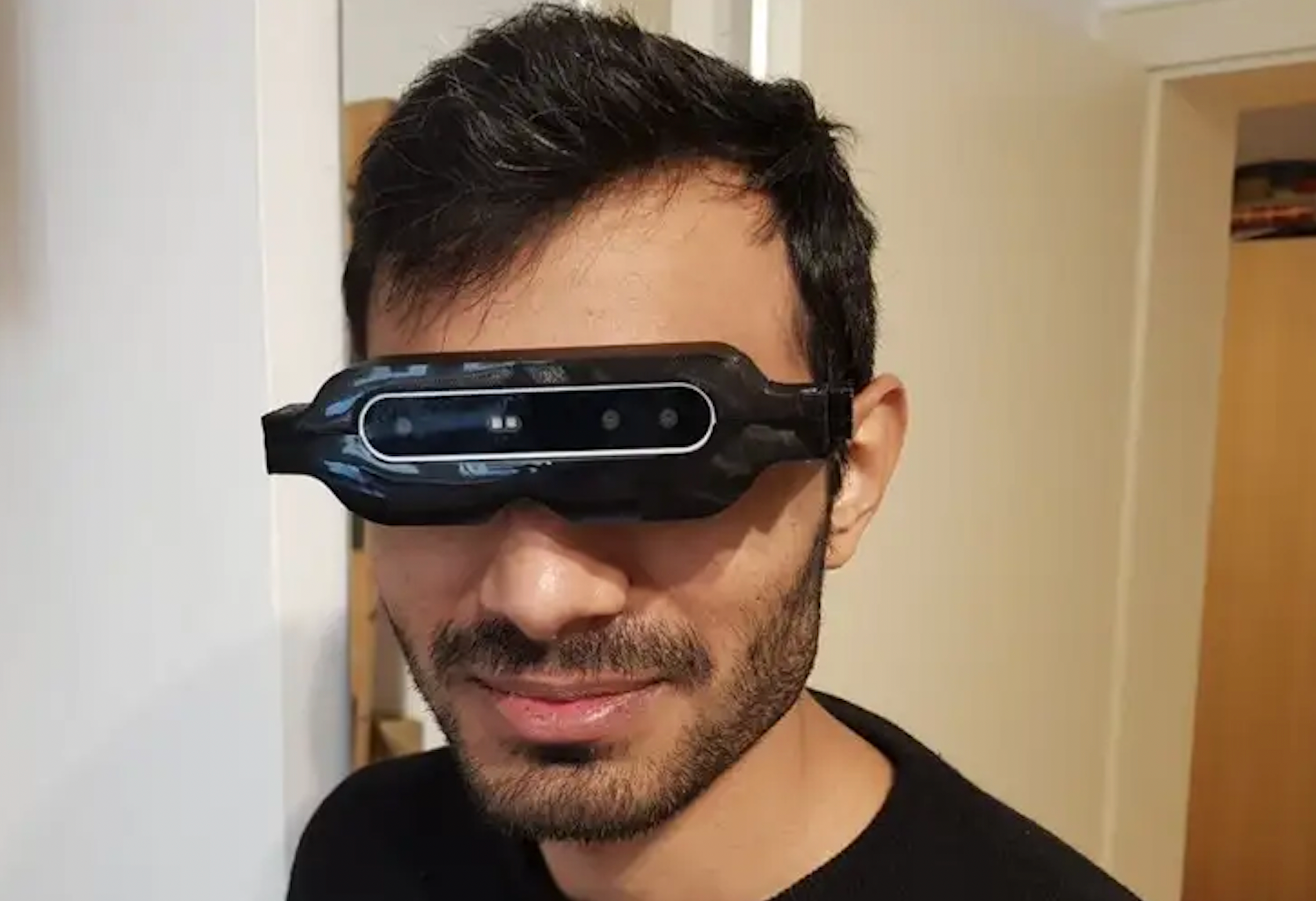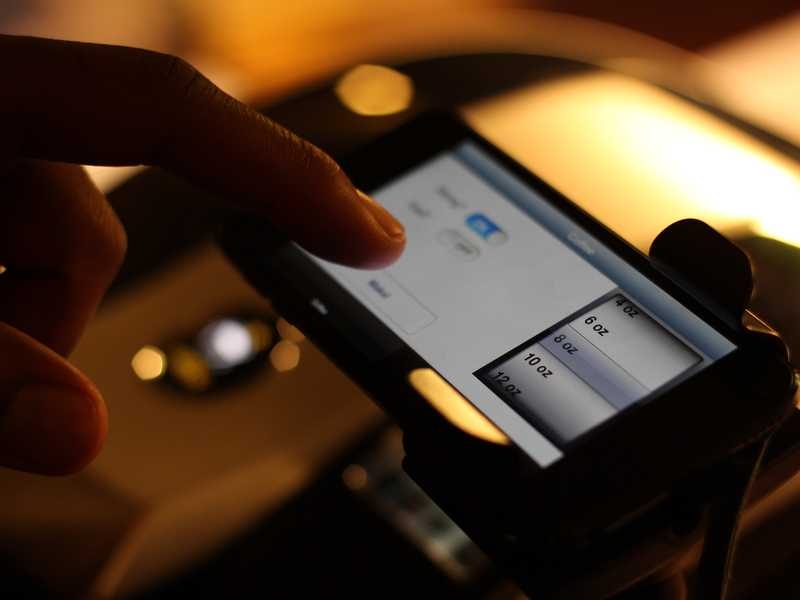Braille Displays and Notetakers: Essential Tools for Learning and Work
Braille Displays and Notetakers: Essential Tools for Learning and Work
Blog Article
Discover Cutting-edge Tools Made for the Aesthetically Impaired
The advancement of cutting-edge tools for the aesthetically damaged stands for a considerable improvement in accessibility and freedom. Technologies such as wise glasses with AI capacities and mobile applications developed to supply auditory descriptions are reshaping day-to-day experiences for customers. In addition, wearable tools that employ haptic responses improve ecological recognition, while modern-day Braille technologies provide brand-new means to engage with message. As these tools continue to develop, their influence on the lives of those with visual impairments raises essential questions concerning the future of inclusivity and freedom in different facets of life. What lies in advance in this technological landscape?
Smart Glasses for Navigation

Smart glasses made for navigation are transforming the method aesthetically damaged individuals interact with their atmosphere. These innovative tools utilize a combination of camera technology, expert system, and auditory comments to provide real-time details regarding surroundings. By utilizing obstacle detection systems, wise glasses can signal individuals to possible threats, enabling safer mobility in both strange and familiar setups.
The integration of GPS modern technology even more boosts navigating abilities, allowing individuals to obtain acoustic instructions as they move. This hands-free approach not just cultivates freedom but also equips aesthetically impaired people to navigate urban landscapes with boosted self-confidence. Furthermore, numerous clever glasses are equipped with functions that identify landmarks and street signs, supplying contextual information that improves the user experience.
Furthermore, the growth of these devices is continually progressing, with companies working to enhance the accuracy of item recognition and increase the series of navigational functions. As clever glasses become much more accessible and budget-friendly, they hold the possible to significantly change every day life for aesthetically impaired individuals. Inevitably, these innovative tools represent an essential action toward inclusivity, offering boosted mobility and a better feeling of freedom for individuals navigating the globe around them.

Mobile Application for Daily Living
How can mobile applications enhance the everyday lives of visually damaged individuals? Mobile apps are changing the means visually damaged users navigate their atmospheres, manage everyday tasks, and accessibility information. These applications provide essential support through various capabilities, fostering self-reliance and boosting top quality of life.
Several cutting-edge mobile apps are developed especially for daily living. For example, apps like Be My Eyes attach aesthetically impaired individuals with sighted volunteers by means of video phone calls, allowing them to receive real-time help with tasks such as reading labels or browsing strange spaces. In A Similar Way, Seeing AI, created by Microsoft, utilizes man-made intelligence to define environments, checked out text, and determine items, effectively transforming a smartphone right into a powerful tool for everyday support.
In addition, navigating apps tailored for the visually impaired, such as Aira and BlindSquare, offer audio-based instructions and ecological info, allowing customers to traverse their environments safely and with confidence. Past navigation and instant aid, mobile apps additionally support company and job management, with functions that aid individuals establish pointers, produce order of business, and track consultations. In summary, mobile applications act as indispensable sources, equipping visually impaired individuals to lead even more independent and meeting lives.
Wearable Technologies for Aid
Empowerment via technology is significantly noticeable in the world of wearable devices created to aid aesthetically damaged people. These innovative devices incorporate effortlessly into everyday life, boosting navigating and offering important comments to individuals. Smart glasses geared up with electronic cameras can acknowledge faces and check out message aloud, enabling individuals to communicate even more confidently in expert and social settings.
Another remarkable improvement is the usage of haptic feedback systems in wearable devices. These systems make use of vibrations or other responsive signals to convey information concerning the customer's setting, such as obstacles or adjustments in surface, boosting mobility and safety and security. Wearable technologies also consist of wristbands that connect to smart devices, notifying users to alerts via refined vibrations, hence improving connection without dependence on visual hints.
As these innovations continue to evolve, they are not just improving freedom for aesthetically impaired individuals yet likewise fostering a higher feeling of addition in society. By bridging the space in between obstacles dealt with in day-to-day living and the capacity for autonomy, wearable innovations serve as critical devices in the quest for equal rights and empowerment for those with other aesthetic impairments.
Audio Description Devices
Audio summary devices play an important duty in boosting access for visually damaged people, giving them with the capability to engage with visual media. Smart glasses for the visually impaired. These tools supply narrated descriptions of key visual components in films, television shows, and live performances, ensuring that individuals can completely understand the context and emotions communicated via visuals
Audio summary can be incorporated into different platforms, consisting of streaming services, cinema screenings, and live theater. Many prominent streaming solutions currently include audio description as an accessibility function, enabling audiences to pick it easily. In addition to traditional media, specialized applications also exist, giving audio descriptions for art exhibitions, galleries, and various other cultural events.
The effectiveness of audio description depends upon the skill of the narrators, that should communicate visual information succinctly without detracting from the original sound. Innovations in this field are also leading the way for more individualized experiences, where customers can adjust the level of information and pacing according to their preferences.
Braille Innovations and Devices
Braille tools and developments have significantly changed the way visually damaged people engage with message and info. Modern advancements have caused the development of flexible devices that enhance proficiency and freedom among customers. Significantly, Braille show innovations have actually progressed, enabling dynamic reading experiences. These gadgets transform electronic text right into Braille, enabling users to access a vast array of info on tablets, computers, and mobile phones.
Moreover, portable Braille notetakers incorporate standard Braille input with contemporary capabilities, facilitating note-taking, scheduling, and document editing and enhancing on the move. Screen readers for the blind. These compact tools typically feature text-to-speech capacities, linking the gap in between Braille and acoustic info
In addition, ingenious Braille printers have actually arised, allowing individuals to generate Braille tags, papers, and instructional materials successfully. This availability cultivates higher involvement in specialist and academic atmospheres, inevitably promoting inclusivity.
In addition, research right into clever Braille technologies remains to expand. Gadgets that include artificial intelligence are being checked out to provide real-time navigation help and contextual details, improving the special info individual experience in varied settings. In general, these developments show a commitment to empowering aesthetically damaged individuals through innovation, guaranteeing they can conveniently gain access to and engage with the world around them.

Verdict
The innovation of cutting-edge devices for the visually damaged substantially improves independence and quality of life. These technologies not just foster better addition yet likewise promote autonomy in everyday tasks, eventually contributing to an extra equitable and available culture for visually impaired individuals.
As wise glasses become a lot more economical and easily accessible, they hold the prospective to dramatically transform daily life for visually impaired customers. Mobile apps are changing the method aesthetically damaged individuals browse their environments, handle day-to-day jobs, and access info. Applications like Be My Eyes link visually impaired individuals with sighted volunteers via video phone calls, permitting them to get real-time help with jobs such as geometric eyeglasses reviewing labels or navigating unknown areas.In addition, navigation applications customized for the aesthetically impaired, such as Aira and BlindSquare, supply audio-based directions and environmental info, enabling users to traverse their surroundings securely and confidently.The development of ingenious devices for the visually impaired substantially boosts self-reliance and quality of life.
Report this page